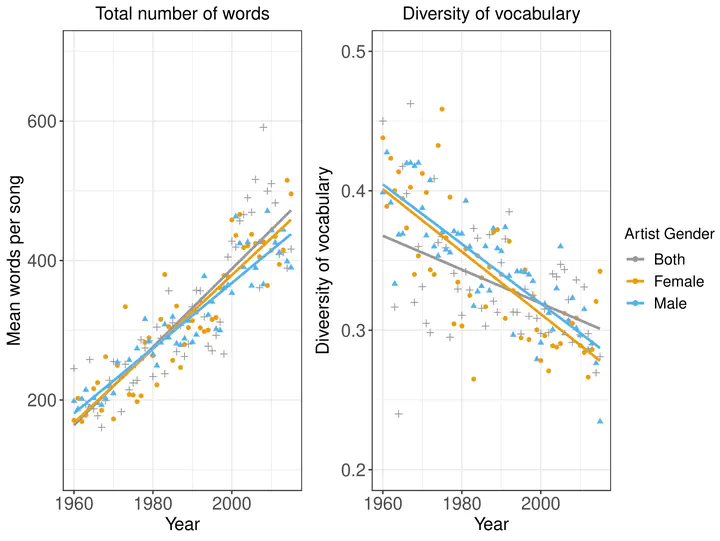Popular music lyrics and musicians’ gender over time: A computational approach

Abstract
The present study investigated how the gender distribution of the United Kingdom’s most popular artists has changed over time and the extent to which these changes might relate to popular music lyrics. Using data mining and machine learning techniques, we analyzed all songs that reached the UK weekly top 5 sales charts from 1960 to 2015 (4,222 songs). DICTION software facilitated a computerized analysis of the lyrics, measuring a total of 36 lyrical variables per song. Results showed a significant inequality in gender representation on the charts. However, the presence of female musicians increased significantly over the time span. The most critical inflection points leading to changes in the prevalence of female musicians were in 1968, 1976, and 1984. Linear mixed-effect models showed that the total number of words and the use of self-reference in popular music lyrics changed significantly as a function of musicians’ gender distribution over time, and particularly around the three critical inflection points identified. Irrespective of gender, there was a significant trend toward increasing repetition in the lyrics over time. Results are discussed in terms of the potential advantages of using machine learning techniques to study naturalistic singles sales charts data.
Analysis code supporitng this study available here.